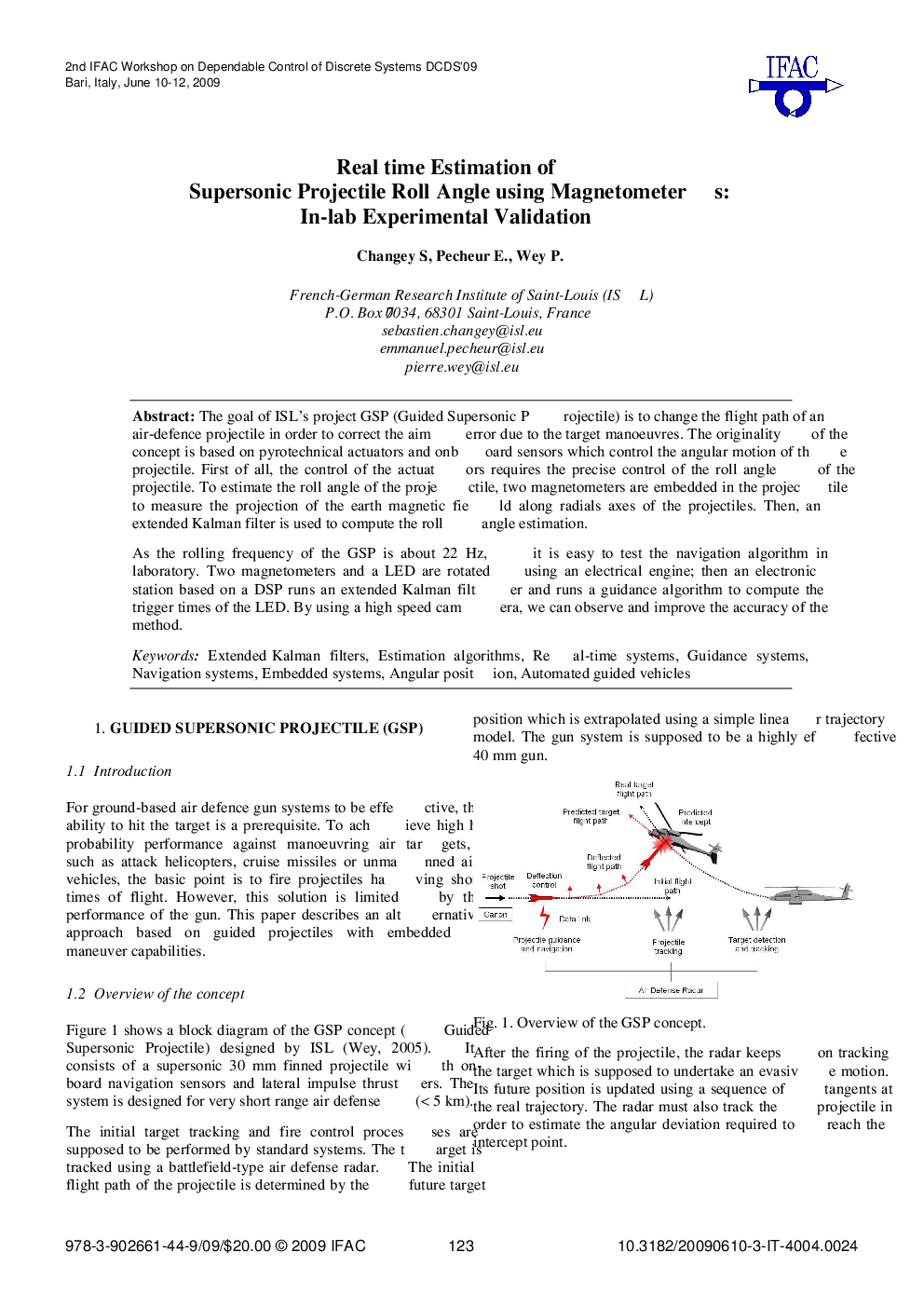| Article ID | Journal | Published Year | Pages | File Type |
|---|---|---|---|---|
| 719106 | IFAC Proceedings Volumes | 2009 | 5 Pages |
The goal of ISL's project GSP (Guided Supersonic Projectile) is to change the flight path of an air-defence projectile in order to correct the aim error due to the target manoeuvres. The originality of the concept is based on pyrotechnical actuators and onboard sensors which control the angular motion of the projectile. First of all, the control of the actuators requires the precise control of the roll angle of the projectile. To estimate the roll angle of the projectile, two magnetometers are embedded in the projectile to measure the projection of the earth magnetic field along radials axes of the projectiles. Then, an extended Kalman filter is used to compute the roll angle estimation. As the rolling frequency of the GSP is about 22 Hz, it is easy to test the navigation algorithm in laboratory. Two magnetometers and a LED are rotated using an electrical engine; then an electronic station based on a DSP runs an extended Kalman filter and runs a guidance algorithm to compute the trigger times of the LED. By using a high speed camera, we can observe and improve the accuracy of the method.
